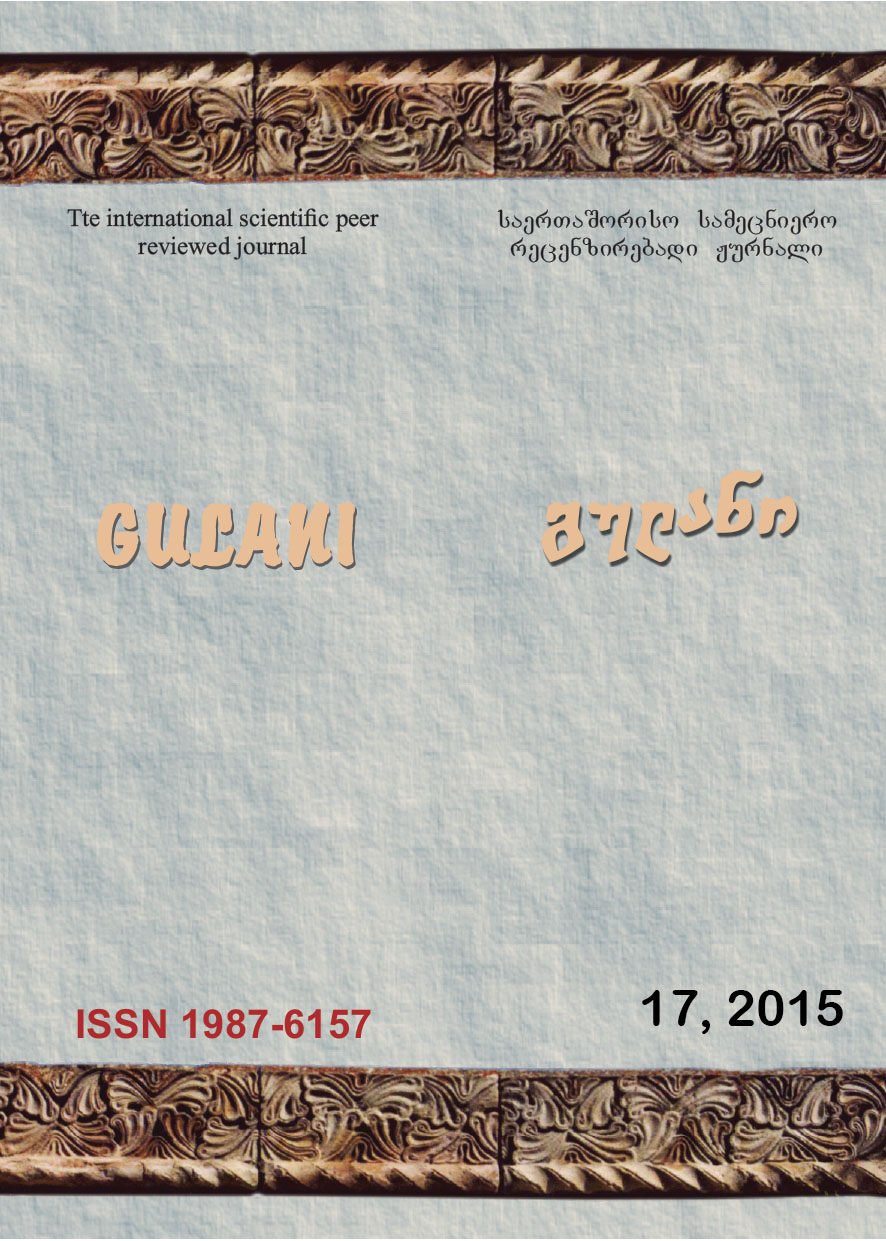ATTRACTIVENESS CHANGE IN A DECISIONAL PROCESS UNDER A SOCIAL STRESS SITUATION FIX ATTITUDE CHANGE UNDER SOCIAL STRESS SITUATION
Main Article Content
Abstract
The term ―stress‖ in the science is introduced by the Canadian scientist H. Selje, in 1936. After this scientist, many contemporary psychologists are interested in study stress phenomena and an influence of stress situation on a various human`s activity. In the special literature about human`s stress condition, except the term ―stress‖, are used such terms, which are: ―extreme‖, ―critical‖, ―particularity‖, ―especially‖, ―difficulty‖, ―emotional‖, ―unusually‖, ―strained‖, ―tense‖. We researched change of attractiveness in decisional process under stress situation and we also researched a change of fix attitude under stress situation. The students of Georgian State University of Tbilisi participated in our experiment; we made experiments in stress situations before students exams and also made experiment in neutral situations – in the period of students summer practice. Our experiment showed, that the attractiveness of the choice alternative increased, but the attractiveness of the thrown of alternatives reduced. We used distinguish features of humans, such as: ―kind‖, ―optimistic‖, ―fascinating‖, ―complaining‖; and ―attentive‖, ―principal‖, ―calming‖, ―severe‖ and other features the whole of 20. We also researched a fix attitude change under stress situation. We used D. Uznadze`s phenomena and his theory of human`s attitude. We made our experiment in situation, when human was in a hurry, because human was solving intellectual tests and human had high level of achievement. We made fix attitude experiment with D. Uznadze`s balls of 30mm. and 60 mm. diameter. Experiment of fix attitude showed, that under stress situation human`s disturbance gave rise to increase number of contrasting illusion. We think this issue is very important for stress psychology.
